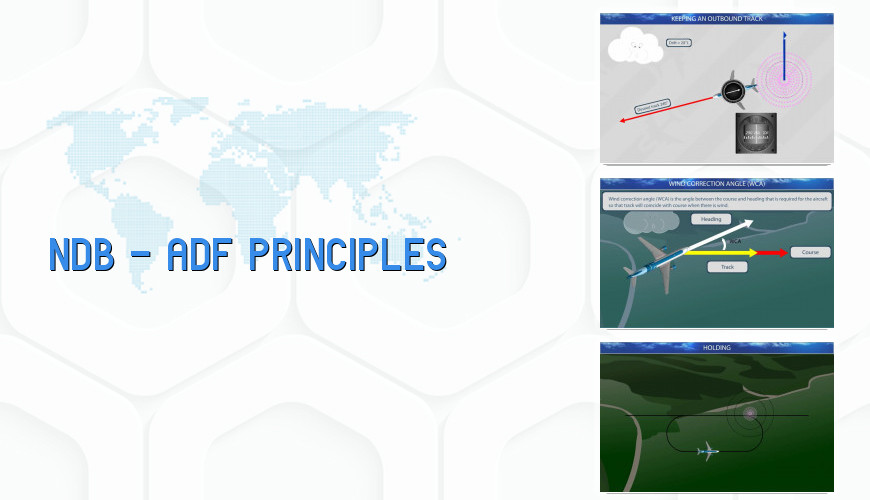
Course Information
This course describes the principles, different types, components, presentations and interpretation of both NDBs and ADF inflight procedures, coverage/range and the effects of terrain and altitude on signal reception.
Content of the Course
| Slide | 93 | Duration | 00:41:25 | Exam | No |
|---|
- COURSE START
- NDB – ADF PRINCIPLES
- Itroduction
- Identification
- Emission characteristics
- Use of navigation
- Types of ndb
- Locator beacon
- Medium range en-route ndb
- Long range ndb
- ADF
- Antennas
- Loop antenna
- Sense antenna
- Receiver
- Control panel
- PRESENTATION AND INTERPRETATION – Heading, Track and Course
- Drift
- Wind correction angle (wca)
- References for heading (bearing)
- Converting magnetic heading into true heading
- Relation between the compass and magnetic headings
- Converting compass heading into true heading
- Correction for variation
- Qdm and qdr
- Relative bearing
- Adf indicators
- Fixed card indicator
- Moving card indicator
- Radio magnetic indicator (rmi)
- Adf in-flight procedures
- Homing
- Tracking
- Keeping an inbound track
- Keeping an outbound track
- Intercepting a track
- Procedure turn
- Holding
- COVERAGE AND RANGE
- Effect of transmitter power
- Effect of propagation path
- Effect of terrain
- Effect of terrain and aircraft height
- Protection range
- Error sources
- Quadrantal error
- Coastal refraction
- Minimising coastal refraction error
- Night effect
- Mountain effect (multipath)
- Static interference
- Station interference
- Absence of failure warning
- Accuracy
- COURSE END

